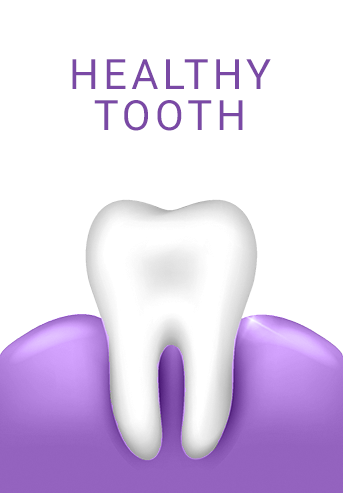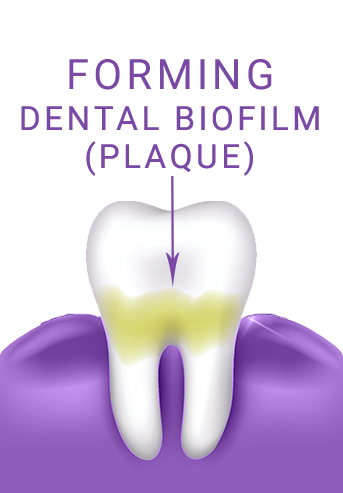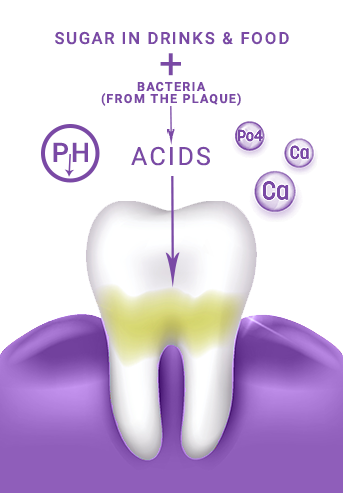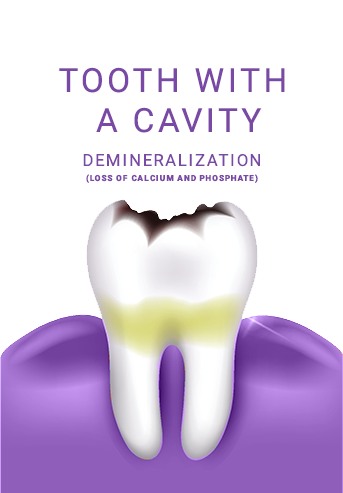Dental Extractions




A little about tooth decay…
The human mouth is a wonderful multi-tasker!
We use it to speak, to kiss, to chew delicious food, and in our facial expressions.
Do you know your mouth is the first part of your digestive tract?
It’s where your teeth chew food into small pieces. Those small pieces mix with saliva, which acts as a lubricant to help you swallow the food.
Saliva also contains a digestive enzyme called amylase, which starts to break down some of the carbohydrates (starches & sugars) in the food to prepare it for digestion even before it leaves the mouth.
Acids that are produced during this early stage of digestion can remain on the teeth unless removed by brushing and begin to destroy the outer layer of the tooth, or enamel.
Enamel is the hardest substance in your body,
but acids can erode the enamel and cause tooth decay.
If left unchecked, the decay will progress through the enamel, into the dentin and finally into the pulp.
When that happens, the decay will either kill the tooth or cause an abscess. In both cases, the tooth will need to be removed. The removal of a tooth is called an extraction.
Extractions
During your visit to Rider Oral Surgery, Dr Rider will examine your tooth.
When Dr. Rider determines that your tooth needs extraction, she will inform you of what to expect before, during and after the tooth extraction.
Dr. Rider’s goal is to make sure you understand what will happen, are comfortable throughout the process and know exactly how to care for your mouth afterward.
Before the procedure
Before the extraction procedure, Dr Rider and her staff will give you local anesthetic to reduce your discomfort.
In most cases, they will apply a substance to the affected gum area to numb it. Once the gum is numb, they will inject Lidocaine to completely numb the entire area.
If the extraction is complicated or the patient requires sedation, Dr Rider and her staff may use nitrous oxide (“laughing gas”) or intravenous (I.V.) sedative to further relax the patient.
During extraction
In most cases, you will remain awake during the extraction. While you will experience some pressure, vibration, hear noise, and feel some movement during the extraction, you shouldn’t experience pain.
After extraction
After the tooth is extracted, we will pack the affected area with gauze to slow the bleeding and help form a clot, an important part of healing. We will give you complete care instructions, so you know how to take care of the area to help promote healing, reduce the risk of complications, know what foods are safe to eat and those to avoid to keep you comfortable. These might include:
Medication
Dr. Rider may prescribe medicine to control pain, inflammation, and prevent infection. Take only the medicine she prescribes for you, as directed.
Clot formation
Leave the gauze pack in place for at least 45 minutes after you leave our office.
If you experience bleeding after you remove the gauze pack, take these steps:
After the tooth extraction some bleeding is normal until a clot forms.
If you continue to experience heavy bleeding, contact Dr Rider and her staff for further instructions.
Dry Socket
Surgical tooth extraction is a routine procedure with very few complications.
A blood clot normaly forms to serve as a protective layer over the empty socket of an extracted tooth.
Dry socket is when the blood clot does not develop or it dislodges.
Watch the video below to learn more.
Numbness
Your mouth will remain numb for several hours after the procedure. Refrain during this time from eating foods that require chewing. If you’re still experiencing numbness the day after extraction, contact Dr Rider’s office immediately.
Cleaning your mouth
Avoid cleaning the teeth next to the healing tooth socket for 24 hours. Brush and floss the rest of your teeth, being careful not to disrupt your healing tooth socket. The day after extraction, you should rinse your mouth with warm salt water or the prescription oral rinse if given by Dr. Rider, as directed.
Swelling and pain
It’s normal to experience some discomfort and swelling after your tooth extraction. Apply ice to your jaw for relief.
Eating and Drinking
Drink lots of fluids and only eat soft foods for 24 hours after extraction. Once you’re able to comfortably chew your food, do so on the side of your mouth opposite the extraction for up to 4 days then chew on both sides of your mouth.